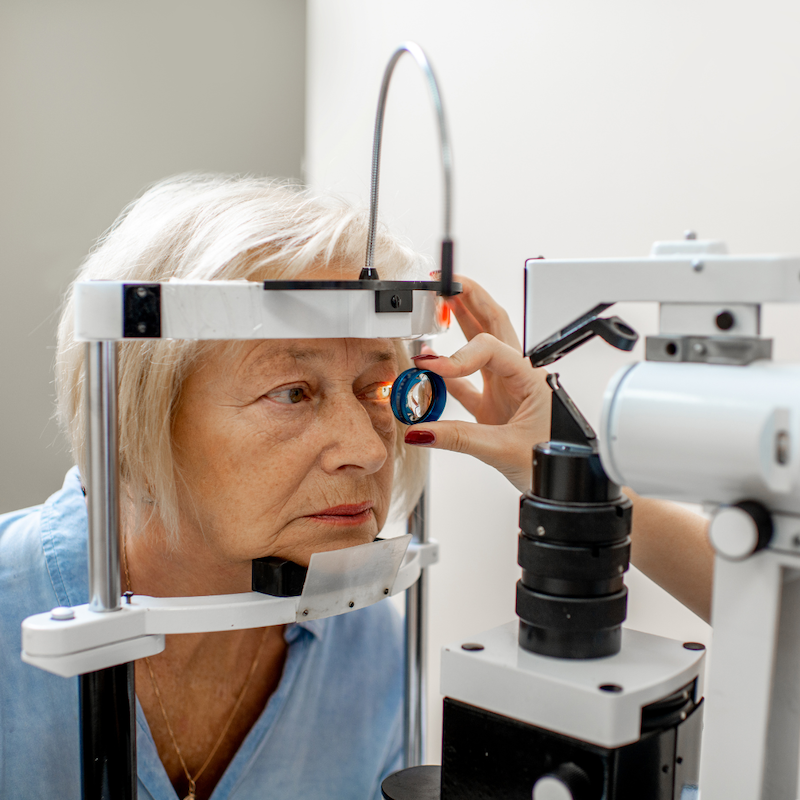FDA Approves First Ever Treatment for Geographic Atrophy due to Age-Related Macular Degeneration (AMD)

At Austin Retina Associates, we take pride in being able to offer our patients the latest advancements in treatment for many common and complex eye conditions affecting the retina.
One new therapy that has recently earned approval from the U.S. Food and Drug Administration (FDA) to treat geographic atrophy from age-related macular degeneration (AMD) is SYFOVRE, which our team of board-certified retinal specialists is excited to start offering to certain AMD patients in the coming months.
What is Age-Related Macular Degeneration (AMD)?
AMD is the leading cause of blindness for adults in the United States, affecting approximately 11 million people. AMD occurs due to an age-related accumulation of cellular debris underneath the retina (known as drusen) as well as the loss or degeneration of retinal tissue (known as geographic atrophy).
This process describes “dry” AMD which represents approximately 90% of all cases of AMD, and can be classified as early, intermediate, or advanced depending on the severity. Occasionally, new blood vessels from a tissue layer underneath the retina called the choroid may leak or bleed in a process known as “wet” AMD. The new blood vessels are called “choroidal neovascularization” (CNV) and are the hallmark of wet AMD.
What is Geographic Atrophy associated with AMD?
Approximately 20% of patients with AMD will develop geographic atrophy, an advanced form of dry AMD causing progressive loss of healthy retinal tissue over time. This results in a permanent reduction of visual acuity and central visual field.
“While there are currently several clinical trials investigating therapies for geographic atrophy including offerings from Austin Retina, there was previously no FDA-approved treatment available to patients with this condition,” explains retina specialist Dr. Edward Wood.
SYFOVRE (pegcetacoplan), manufactured by Apellis Pharmaceuticals, was approved in February 2023 and is considered the first effective treatment for geographic atrophy in AMD.
How effective is SYFOVRE?
Clinical studies have shown that intravitreal injections of SYFOVRE every one to two
months are effective at reducing the rate of enlarged areas of atrophy in the macula by approximately 20%, and that this effect may increase the longer it is used.
This medication was developed based on evidence that genetic changes associated with a key component of inflammation called the “complement cascade” play a role in AMD. SYFOVRE targets a key component of the complement cascade called C3, thereby reducing the progression of geographic atrophy.
How is SYFOVRE administered?
SYFOVRE is injected into the gel-like part of the eye (vitreous) every 25 to 60 days as directed by one of our Austin Retina Associates physicians.
What does this mean for patients?
Our retina specialists explain that “for many patients with geographic atrophy encroaching on their central vision, any reduction in the rate of progression offered by this treatment may translate to years of preserved functional vision.”
They add that “continued advances in therapy have allowed us to limit vision loss in the vast
majority of patients affected by wet macular degeneration. However, until now, there has been little to offer our many patients with vision loss from advanced dry AMD.”
Patients will be relieved to know that SYFOVRE is now a successful treatment option that we can help you with at Austin Retina Associates.
Consult With a Retina Surgeon in Austin Today
To learn more about treatment for AMD or other retina conditions contact Austin Retina Associates at 800-252-8259, or request an appointment online with one of our board-certified retinal specialists.
Austin Retina Associates has several retina treatment centers located in metropolitan Austin as well as throughout Central Texas.
For the latest Austin Retina news, visit our blog or follow us on Facebook and Instagram.

